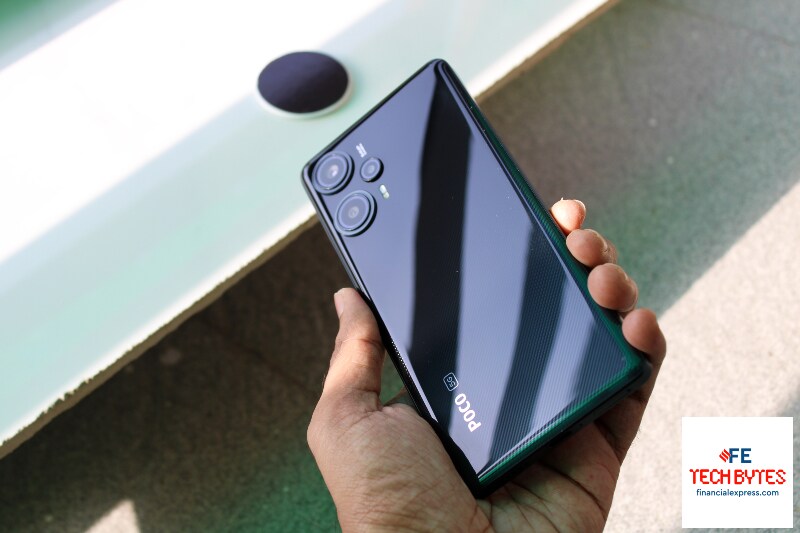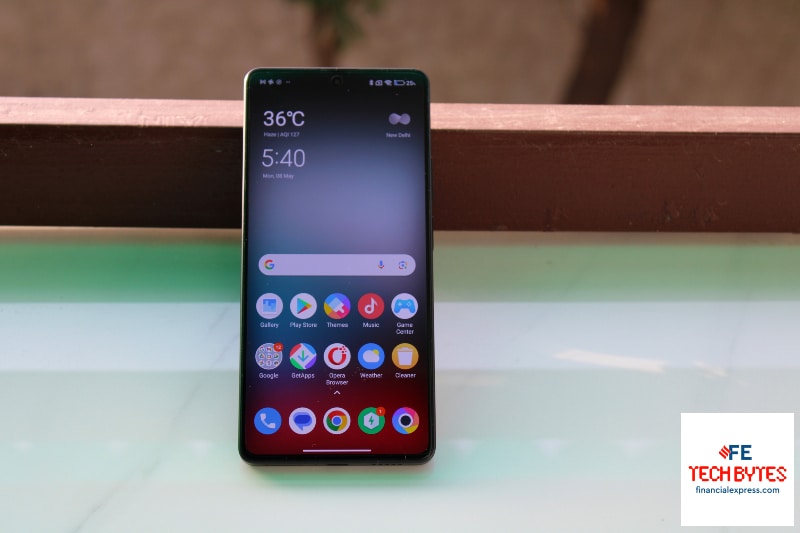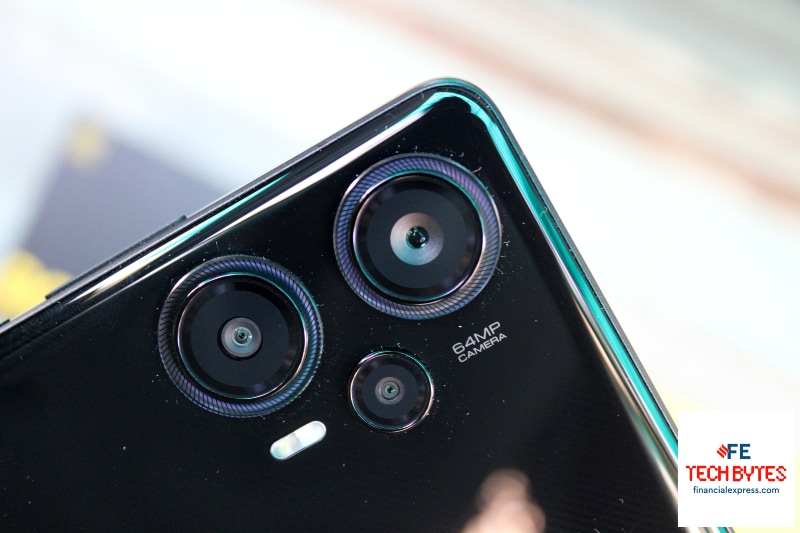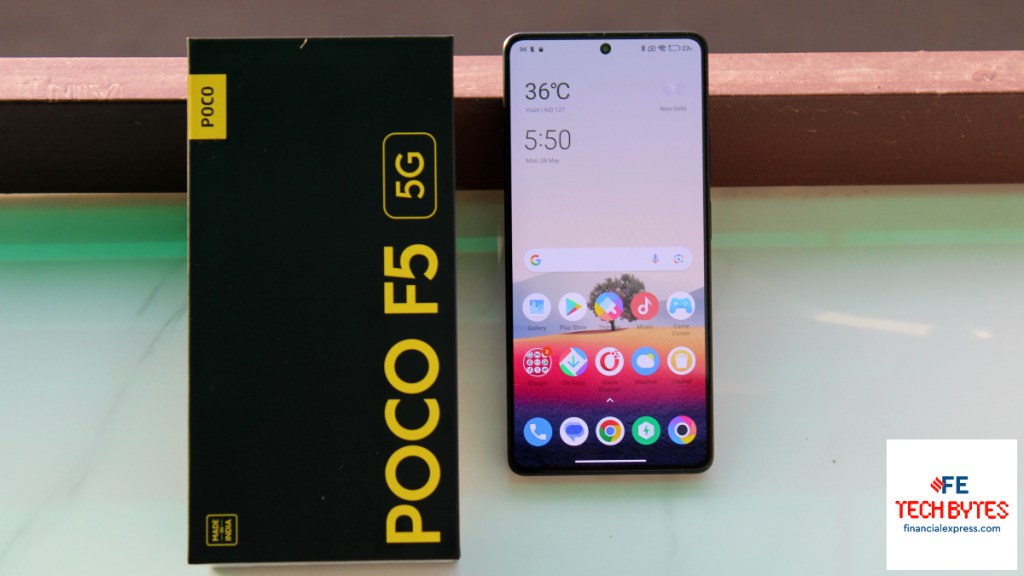Most Poco phones are Redmi phones, but not all Redmi phones can be Poco phones. Speed, aka, fast performance, is a big consideration for a Poco phone. The design, too, should match the calibre. Sometimes it is outlandish, sometimes sober, but you can always tell a Poco phone from a Redmi phone from afar, even though they’re much of the same thing aside from the customary (re)branding exercise. This is not a dig at Poco, or Xiaomi. Credit where credit’s due, and folks at Poco deserve all the credit for their creative choices. Not to mention, this gives Indian buyers a chance to grab some great hardware at competitive pricing, which may remain a China exclusive otherwise— who knows? So bottomline is, everyone’s a winner.
Take the Poco F5 for instance. It is the world’s first phone to come with Qualcomm’s swanky new Snapdragon 7 Plus Gen 2 processor. The great thing about this “midrange” chipset is that it shares a lot of bells and whistles with the more premium-tier Snapdragon 8 Plus Gen 1. It is built around the same 4nm TSMC manufacturing process and uses the same Cortex-X2, A710 and A510 CPU cores with a maximum clock speed of 2.91GHz (the 8 Plus Gen 1 can go a bit higher at up to 3.19GHz). The Adreno 725 GPU inside is also not too far off from the 8 Plus Gen 1’s 730. Poco ships the phone with 256GB of fast UFS3.1 storage by default. The RAM can go up to 12GB and uses the LPDDR5-type. The hardware combo not only makes the Poco F5 a significant update to last year’s –fantastic— Poco F4, it makes it the fastest phone south of Rs 30,000 at the time of writing, period.

The Poco F5 slams hard at benchmarks, as a result, and quite literally flips the script for value midrange phones scoring a whopping 9,32,739 on AnTuTu. It’s a new benchmark for its category, the Poco F5. CPU Throttling does not always return favourable results which suggests the chip could do with some more optimisation. Real-world performance, though, is slick in every sense of the word and leaves little to be desired, whether it be basic day-to-day use or graphical gaming. Unlike rival phones from OnePlus and Realme, Poco does not put caps on high-refresh gaming either. If a game supports it, the Poco F5 can play it, no questions asked.
The 5,000mAh battery takes you over a day with ease, even when you’re pushing it. The bundled charger –which can pull 67W—tops the phone from 0-100 percent in just under 55 minutes.
Also Read | Poco F5 quick review: Unboxing, first look at design, specs, features and all you need to know
Poco wraps all this inside a slim and attractive design. The white version stands out especially with its unique “frosty” depth effect, while the black version we have for review is glossy and mirror-like and mimics the carbon-fibre look well. You can get the Poco F5 in a shade of blue, too. The selection is diverse and should appeal to all kinds of buyers. Poco has swapped glass for plastic in this generation and while it may seem like a downgrade, the phone doesn’t feel like it in flesh. Also, it makes the F5 one of the sleekest Poco phones ever made. And the build-quality is solid. The back has a subtle curve towards the edges while the frame is completely flat. The phone offers mostly comfortable grip. The side-mounted fingerprint scanner is fast and reliable.

The screen is 6.67-inch, flat 1080p pOLED with up to 120Hz refresh rate and 240Hz touch sampling. The panel can peak 1,000nits and supports HDR10+ and Dolby Vision playback, features only Xiaomi has been able to provide at these prices. Poco makes good use of all the real estate as well with nice and trim bezels on all sides, giving many premium flagship phones a run for money. Multimedia consumption on this phone is immersive and satisfying. Rounding off the package is Corning Gorilla Glass 5 screen protection (the F5 also comes with an official IP53 rating).
The camera setup is unchanged from the Poco F4. You get the same 64MP OIS triple rear camera setup and the results aren’t any better or worse even though one would assume, the new ISP would have worked some magic.
The main camera takes good photos with ample detail, rich –if a little too saturated—colours, and wide dynamic range under good light. Under tricky and low lighting, also, it can capture good amount of detail with little to no noise. Night mode works well enough to brighten a low-lit scenario with exposure mostly on point. The 8MP ultrawide takes more true-to-life photos. Distortion is handled well and only the most discernible eye will be able to point out any corner softness. The 2MP macro— once again— is a spec-filler. You can record videos at up to 4K@30fps on the Poco F5 (the F4 could go up to 60fps). These come out nice and crisp with natural tones and fairly wide dynamic range.
On the front, you get a 16MP camera. It takes good selfies and pleasing portraits in good light. Low light selfies could be better. Video recording tops out at 1080p@30fps.
Poco F5 5G— Should you buy it?

If you’re wondering why we didn’t talk about the software, well, that’s because there isn’t much to talk about. You get MIUI 14 in this phone which is based on Android 13. Software used to be a big differentiator for Poco phones but as it grew, its individuality kind of got lost along the way. Today, there’s no way of telling a Poco phone apart from a Xiaomi/Redmi phone without going into the settings. Not that there’s anything wrong with that. Everything runs fast and smooth with barely any bug or stutter. The feature set is sizeable and useful. But, does it have a heart and mind of its own, like it was once promised? No. Not to mention, the number of unwanted apps has shot up so that’s one more thing that Poco has taken a U-turn on lately.
Also Read | Poco F4 5G review: Back in the game
As for hardware, it doesn’t get any better than this. That’s the one thing that has remained constant to this day. You need high-end hardware, but you don’t want to break your bank? Poco is what you should be looking at.
The Poco F4 took the crown for its no-nonsense take on pure performance. The Poco F5 takes all that and adds 2x more value which is to say that it’s a step in the right direction. You can get it with 8GB/256GB for Rs 29,999 and 12GB/256GB for Rs 33,999. And at these prices, it’s got enough power and pizzazz to sell itself.
| PROS | CONS |
| Sleek, stylish design | Low-light photography could be better |
| High-quality display | Iffy software |
| Fast performance | |
| Good battery life, fast charging |







